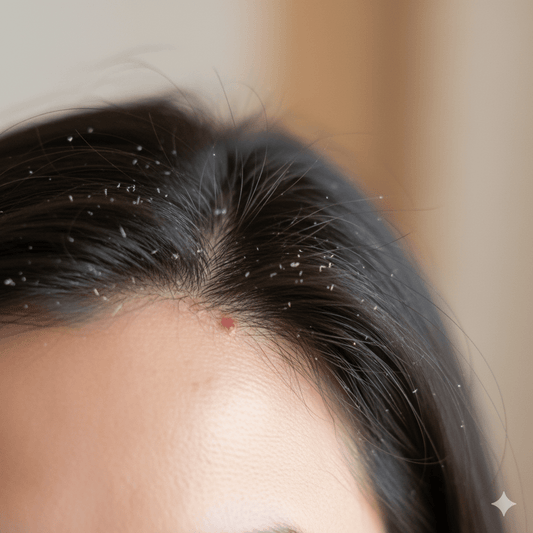Few things cause as much worry as discovering white specks in the hair. Parents often ask whether their child has head lice or if it is simply dandruff. Although both conditions can look similar at first glance, there are clear differences that help distinguish them quickly.
Dandruff, which is usually a mild form of seborrheic dermatitis, consists of loose white or yellow flakes that shed easily from the scalp. These flakes often fall onto the shoulders or clothing and can be brushed away with little effort. The underlying scalp may appear slightly red or oily, and the itch can range from mild to moderate. Importantly, dandruff does not stick firmly to the hair shaft.
Lice, on the other hand, are small parasitic insects that live on the scalp and feed on human blood. The most visible sign of infestation is the presence of nits, or lice eggs, which are tiny oval capsules attached firmly to the base of the hair shaft. Unlike dandruff flakes, nits do not brush away easily. They are glued to the hair close to the scalp and remain in place even when the hair is tugged. In addition to nits, live lice may sometimes be seen moving through the hair, although they can be difficult to spot because of their speed and small size.
The itching from lice is usually more intense than that of dandruff and is caused by an allergic reaction to lice saliva. Scratching may lead to small sores or secondary bacterial infection. In children, the itch is often most noticeable behind the ears and at the nape of the neck, where lice commonly cluster.
A quick way to tell the difference is to examine the specks closely under good lighting. If they brush off easily, they are likely flakes of dandruff. If they remain stuck to the hair shaft, especially near the scalp, they are more likely nits. Using a fine-toothed comb can also help: dandruff passes through, while nits must be pulled down the hair shaft.
Ultimately, dandruff is a scalp condition, while lice are an infestation. Dandruff responds well to medicated shampoos containing zinc pyrithione, selenium sulfide, or ketoconazole. Lice require treatment with pediculicides (such as permethrin lotion) or other recommended therapies, and close contacts should be checked. Because misdiagnosis can lead to unnecessary treatment or ongoing symptoms, a physician, nurse, or school health professional can confirm the diagnosis if there is any uncertainty.
References
-
American Academy of Dermatology. Dandruff: Signs and Symptoms.
-
Centers for Disease Control and Prevention (CDC). Head Lice: Frequently Asked Questions.
-
Mayo Clinic. Head Lice: Diagnosis and Treatment.
-
DermNet NZ. Seborrheic Dermatitis.
-
Frankowski BL, Bocchini JA; American Academy of Pediatrics. Clinical Report: Head Lice. Pediatrics. 2010;126(2):392–403.




